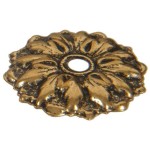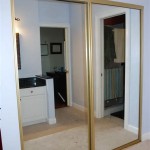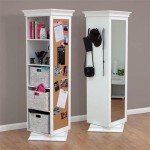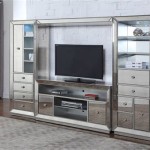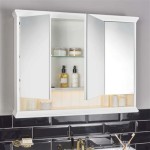Why a Convex Mirror Is Used in Vehicles
Convex mirrors are a crucial safety feature in vehicles, providing drivers with an expanded field of view that reduces blind spots. Their unique curved shape and reflective properties allow them to capture and reflect light in a way that significantly enhances driver awareness. This article will explore the underlying principles of convex mirrors and delve into the reasons behind their widespread use in vehicles.
Wider Field of View
The primary reason for utilizing convex mirrors in vehicles lies in their ability to provide a wider field of view compared to plane mirrors. A convex mirror's outward curvature allows it to reflect light rays from a broader range of angles. This characteristic enables drivers to see more of the area around their vehicle, including objects and other vehicles that might be hidden from direct view. The increased field of view is particularly helpful when changing lanes, merging onto highways, or maneuvering in tight spaces. The wider perspective allows drivers to make more informed decisions and significantly reduces the risk of accidents caused by unseen obstacles or vehicles.
Diminished Image Size
While the wider field of view offered by convex mirrors is a significant advantage, it comes at the cost of diminished image size. Objects reflected in a convex mirror appear smaller than their actual size. This phenomenon is a direct consequence of the diverging nature of the reflected light rays. While this might seem like a drawback, the reduced image size is actually beneficial in the context of vehicle safety. It allows drivers to see a larger area within the confines of the mirror, effectively compressing the visual information into a manageable space. This compression enhances the driver's overall perception of the surrounding environment, enabling quicker identification of potential hazards.
Virtual Image Formation
Convex mirrors form what is known as a "virtual" image. Unlike a real image, which can be projected onto a screen, a virtual image appears to be located behind the mirror's surface. This is because the reflected light rays diverge, and the eye perceives them as originating from a point behind the mirror. While the image is smaller and appears further away than the actual object, the virtual image provides crucial information about the presence and relative position of objects in the driver's blind spots. This awareness empowers drivers to anticipate and react to the movements of other vehicles and pedestrians more effectively.
Reduced Blind Spots
Blind spots are areas around a vehicle that the driver cannot directly see through the rearview or side-view mirrors. These areas pose a significant safety risk, as they can conceal other vehicles, cyclists, or pedestrians. Convex mirrors, strategically placed on the vehicle's exterior, are instrumental in minimizing the impact of blind spots. Their wider field of view allows drivers to see into these otherwise obscured areas, providing a more comprehensive understanding of their surroundings. This enhanced visibility is particularly crucial during lane changes, parking maneuvers, and navigating intersections, where failing to see objects in blind spots can lead to collisions.
Cost-Effectiveness and Durability
Convex mirrors are relatively inexpensive to manufacture and install, making them a cost-effective safety solution for vehicles. Their simple yet effective design requires minimal maintenance, further contributing to their overall value. Furthermore, convex mirrors are generally made from durable materials that can withstand exposure to various weather conditions and impacts, ensuring their longevity and consistent performance. This robustness is essential for a safety component that must function reliably in diverse environments.
Regulations and Standardization
The importance of convex mirrors for vehicle safety is reflected in their inclusion in various regulations and standards around the world. Many jurisdictions mandate the use of convex mirrors on certain types of vehicles, such as buses, trucks, and vans. These regulations often specify the minimum size and placement of the mirrors to ensure adequate visibility and driver awareness. The standardization of convex mirror usage highlights their recognized role in mitigating accidents and promoting safer driving practices.
The curved reflecting surface of a convex mirror and its ability to form virtual images are key to its function in expanding the driver's field of vision. This, combined with its affordability and durability, makes the convex mirror an indispensable safety feature in modern vehicles, contributing significantly to a safer driving experience for all.

Convex Mirrors Use Car

Why Do We Prefer A Convex Mirror As Rear View In Vehicles

Convex And Concave Mirrors In Cars

Concave Vs Convex Mirrors In Cars
Why Are Side View Mirrors Flat On The Driver But Convex Passenger Quora

What Are The Diffe Types Of Car Mirrors Sunway Autoparts

Side View Mirror Wikipedia

The Reason Why Objects In A Car S Side View Mirror Are Closer Than They Appear Mental Floss

Objects In Mirror Are Closer Than They Appear Wikipedia

Why Aftermarket Blind Spot Mirrors For Your Car Are Actually Unsafe Drivespark


